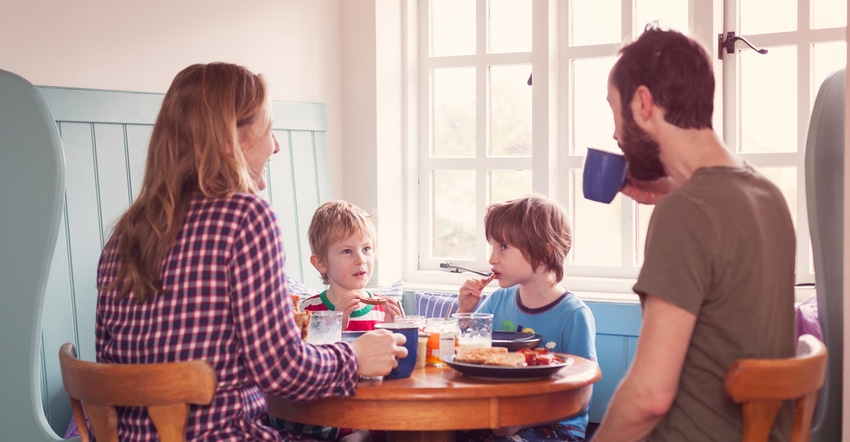December 15, 2021

There are few things about the pandemic that most of us would consider good, but I read an article recently that makes me believe one positive thing happened as a result of COVID-19. According to a study conducted between March and April, 92% of U.S. families plan to continue eating together at home at least as often as or more often than they do now once the pandemic ends.
In 2019 — about a year before the pandemic began — I read a story about the average American family spending more money on eating at restaurants than on buying food at a grocery store. I wondered, how can people afford that? The article went on to say that restaurants have steadily grown in popularity over the years as an increasing percentage of women work outside the home.
Then COVID hit and suddenly everybody was eating at home.
Food trends changed
According to new research done by the sales and marketing firm Acosta, the eat-at-home trend boosted by the COVID-19 crisis won’t end anytime soon. After the pandemic ends, 92% of families plan to continue eating together at home at least as often as, or more often than they do now, the study says. The study showed that eating together as a family will stay the same for 72% of all households, while 20% expect to eat together more frequently.
Almost two-thirds of shoppers polled reported that, since the coronavirus outbreak began, they cook at home more and eat “far more” meals at home all the time, the study says. That trend spanned all eating occasions during the day. Following the start of the pandemic, 47% of adults ate breakfast at home every day (vs. 37% pre-COVID), 40% of adults ate lunch at home every day (26% pre-COVID) and 31% of families ate dinner at home every day (18% pre-COVID). Children’s eating habits were impacted as well. After the onset of the pandemic, 53% of kids ate breakfast at home every day (48% pre-COVID), while 48% ate lunch at home every day (33% pre-COVID).
Signs that many Americans will stick with eating at home are welcome news to grocery stores, which during the first year of the pandemic benefited from a surge in sales as more consumers opted to prepare meals at home or buy grab-and-go and heat-and-eat items. As grocery stores begin to cycle the big sales gains from the pandemic’s early weeks, companies are seeing less or no growth, or declines, but report that their sales levels remain high vs. the pre-pandemic period.
Citing National Restaurant Association findings, the study says Americans helped restaurants during indoor dining shutdowns by buying food via the drive-thru (63%) and in-store or curbside pickup (49%). Sixty-eight percent of U.S. adults said they’re more likely now to buy food for takeout than before COVID-19, and 80% of restaurant operators reported adding curbside pickup during the pandemic.
On the other side of the coin, shoppers eating at home encountered meal planning challenges during the pandemic, the study reveals. Fifty-six percent of those polled found planning different meals every day a challenge, and 45% expressed concern about COVID-19 exposure when grocery shopping. Also, 33% were pressed for time in preparing and cleaning up after meals, and 29% said they need to improve their cooking skills.
Still, people ate out far less amid the pandemic. The report said 44% of consumers eat out at least once weekly since the COVID-19 outbreak vs. 53% beforehand. Forty-one percent reported that they “definitely avoided” eating out.
There’s nothing wrong with eating out occasionally. But it’s nice to see that most families have gotten back to basics, learned how to plan meals, buy groceries, cook and do dishes. They’re saving money and likely are eating healthier, too.
Comments? Email [email protected].
Read more about:
Covid 19You May Also Like




